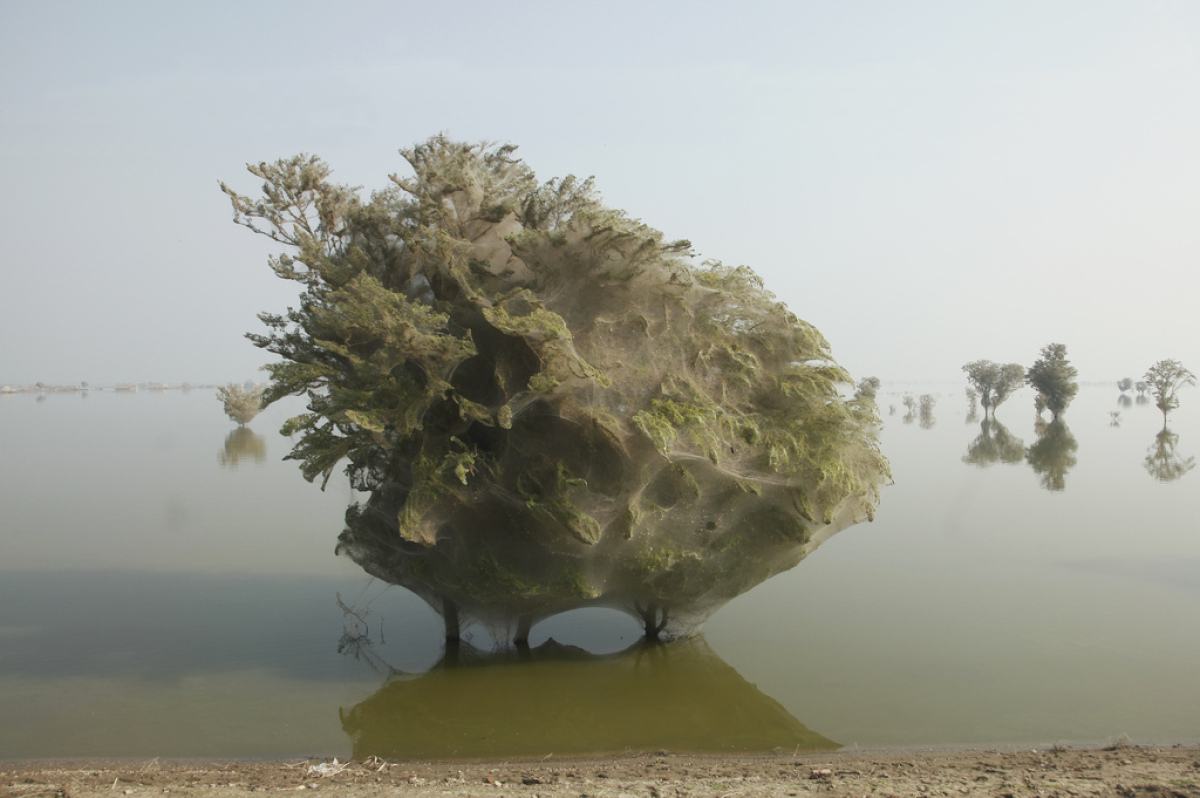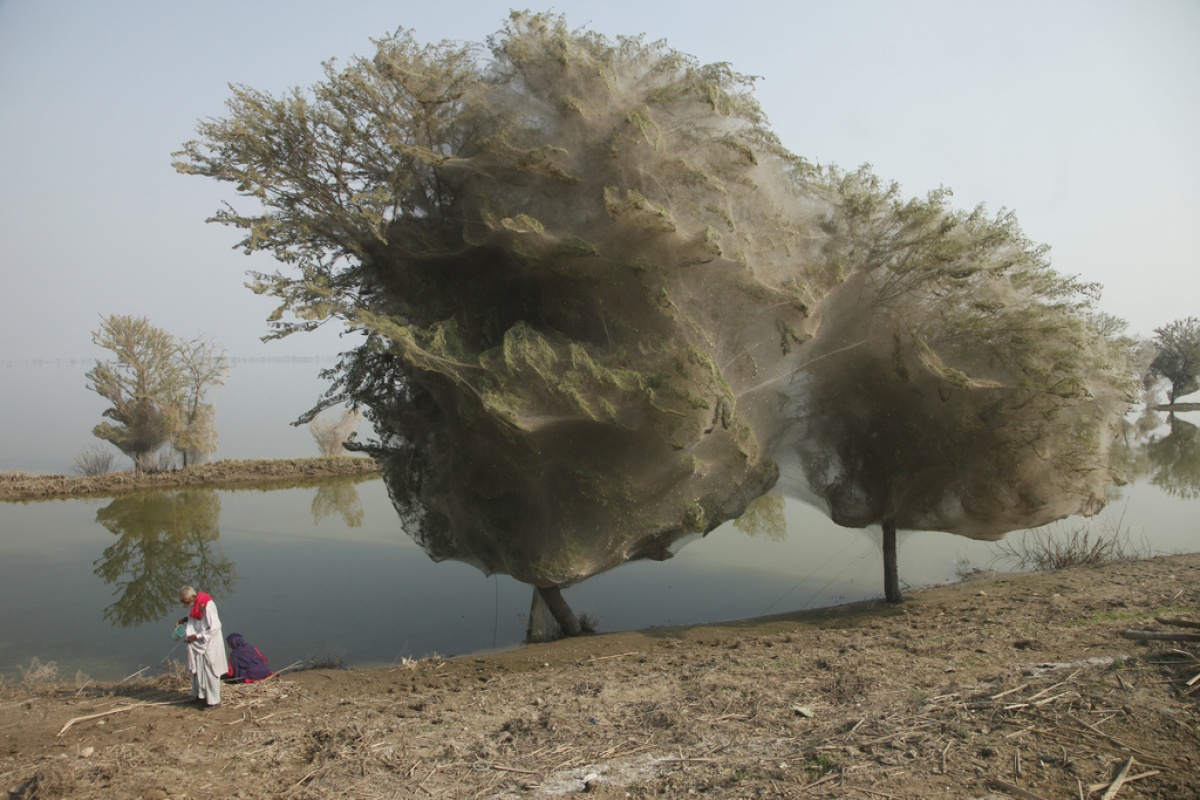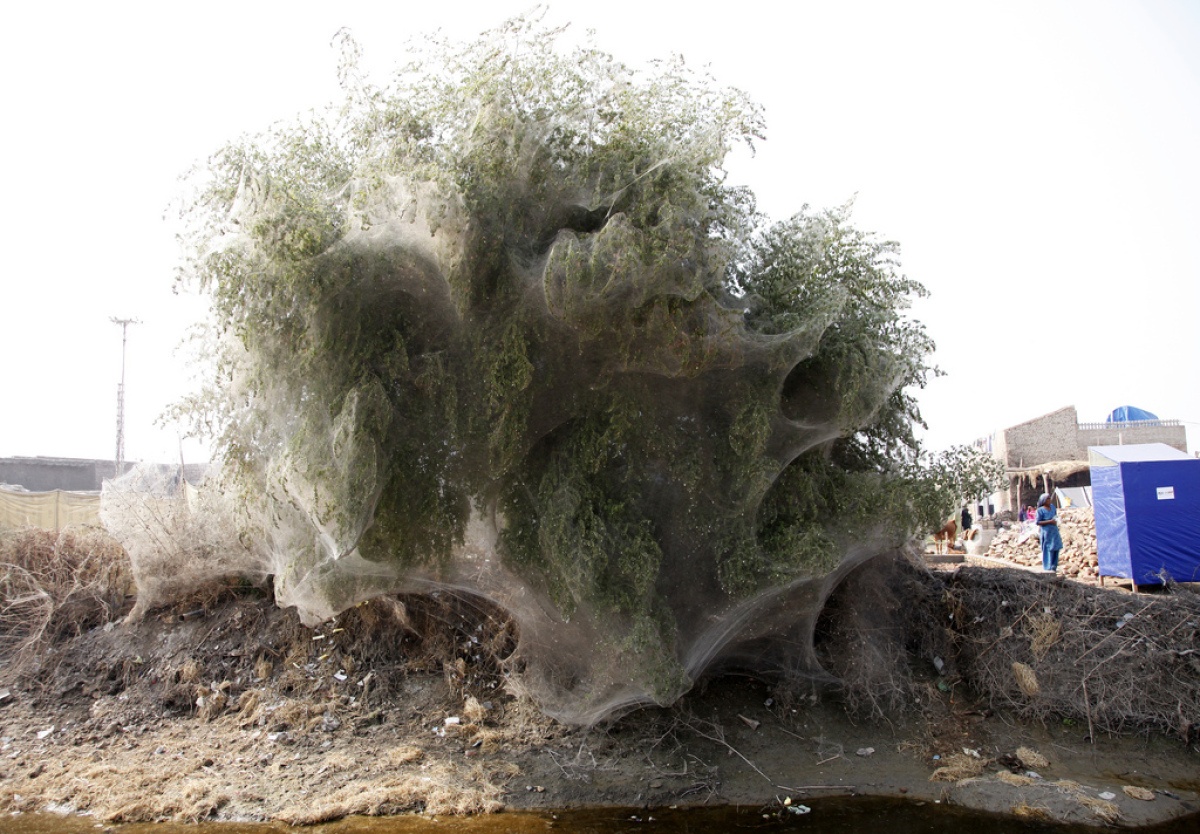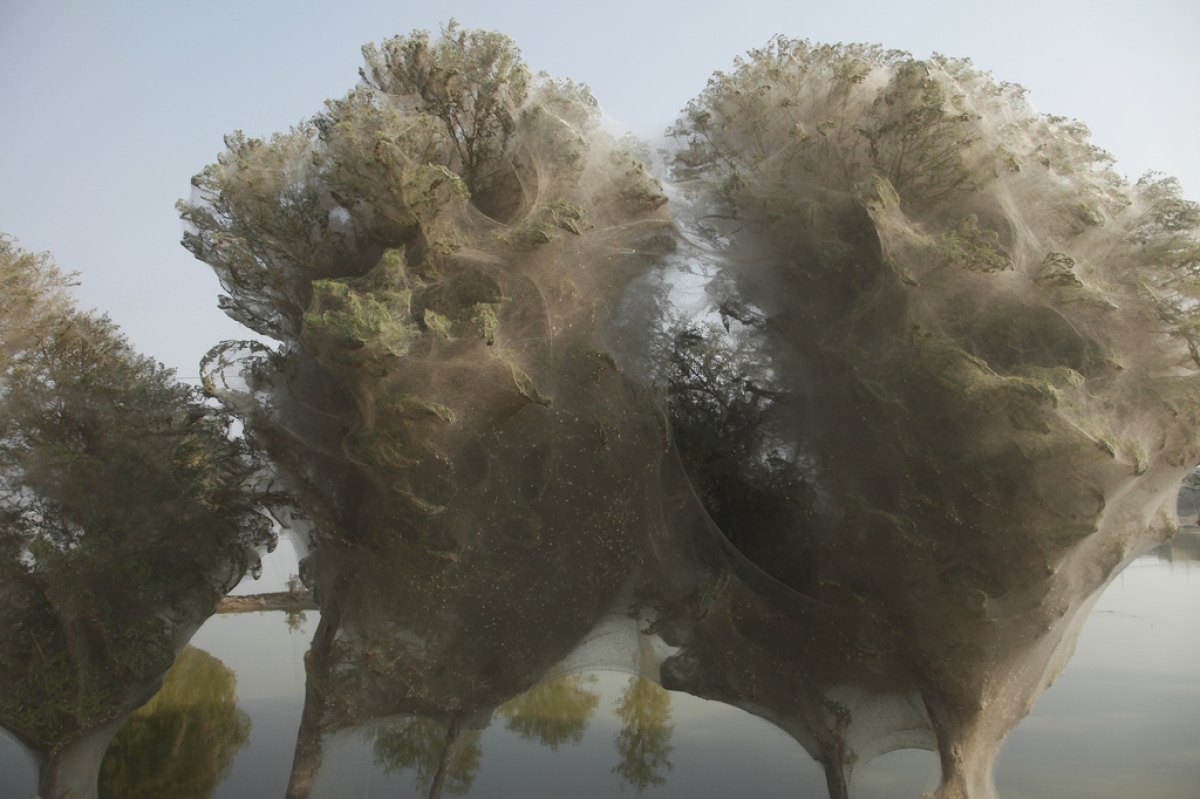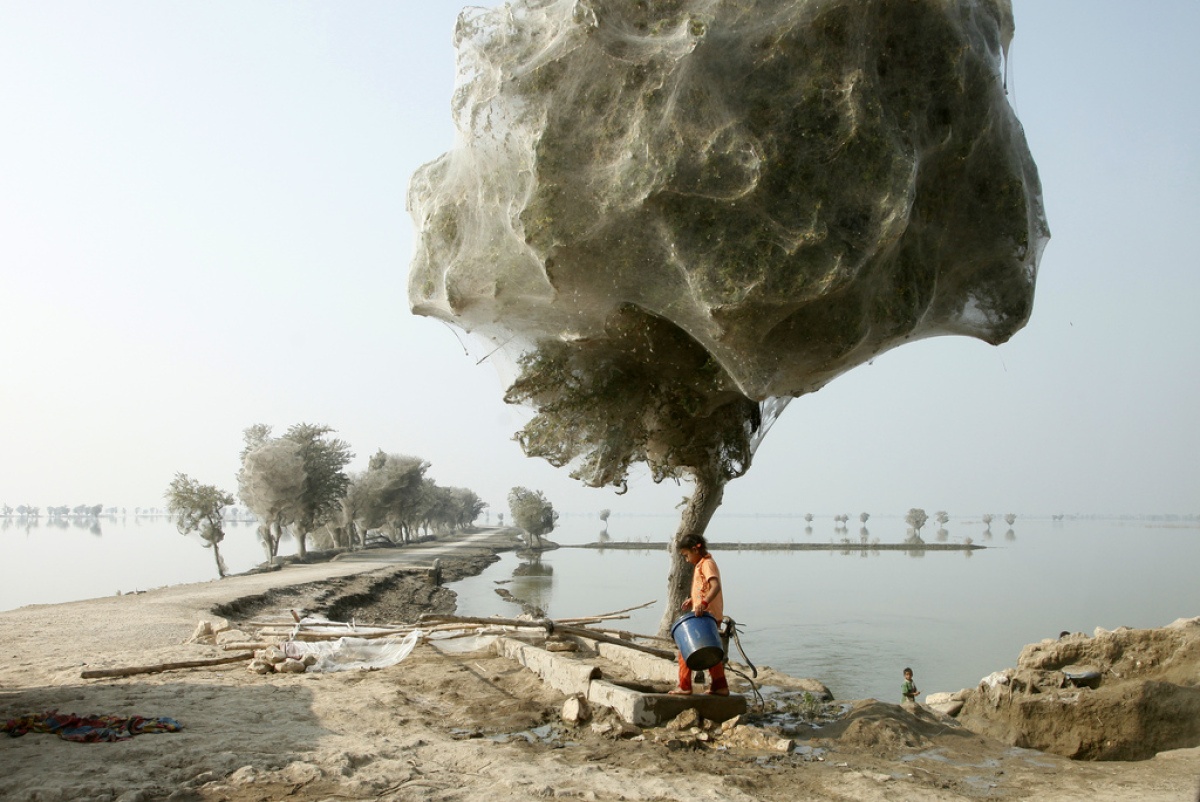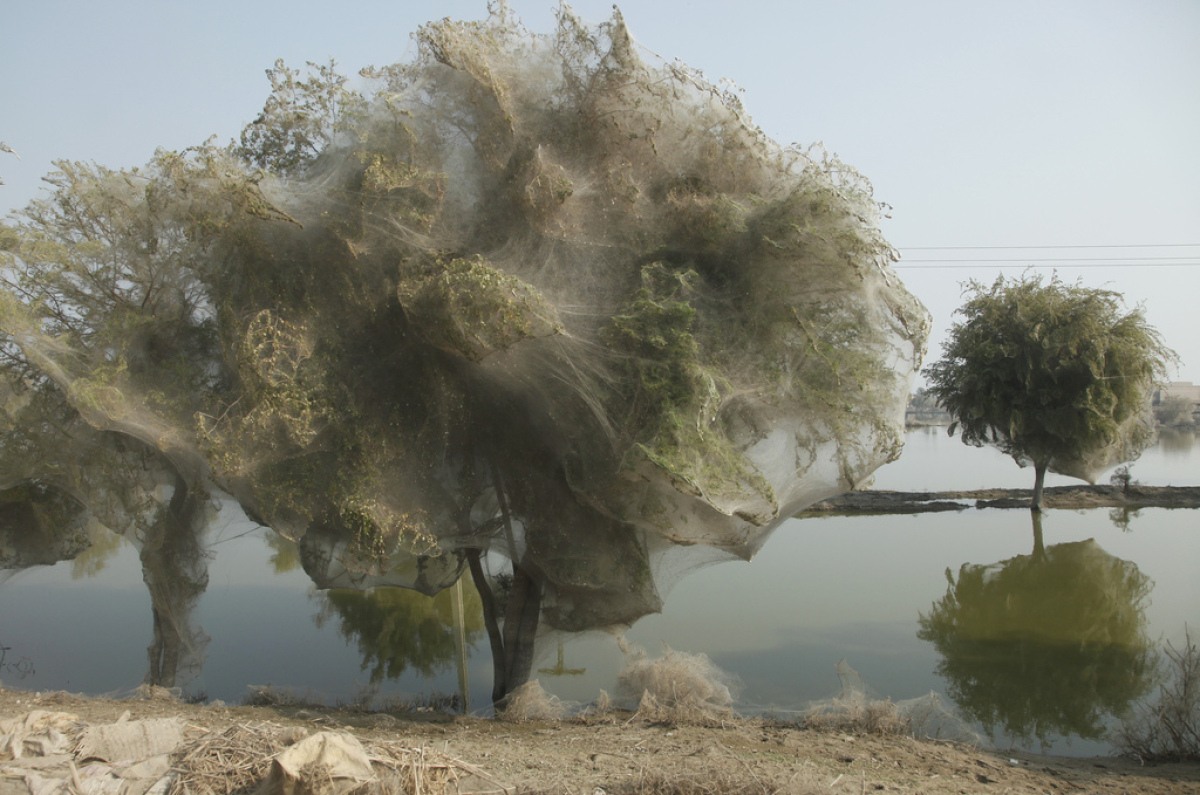*Guest blog by Michael Tomascik, Public Affairs team, Ottawa
As a result of massive flooding that hit Pakistan last year; millions of spiders were forced to seek refuge in the few outlying trees. Moreover, with the flood waters slow to recede, the spiders were forced to settle in and call the trees home. And naturally, where there are millions of spiders, there are bound to be millions of spiders at work spinning webs.
All the while Red Cross and Red Crescent crews were hard at work providing relief to those affected by the situation, but little did they know, they weren’t the only ones providing aid. According to Wired and the DFID, the cocooned trees are not only an amazing spectacle, but may also be responsible for helping reduce the spread of malaria in the area. The trees act as massive mosquito traps, capturing potentially malarial mosquitoes.
This is especially helpful in Sindh where stagnant pools of water left by the flood have presented the perfect spawning grounds for throngs of mosquito larvae. Although they may be quite helpful, for the arachnophobic, this is certainly one stand of trees you don’t want to be caught under.
These photos, as shown in the Huffington Post, were taken by Russell Watkins, of the United Kingdom’s Department for International Development (DFID). on a farm in the Pakistani village of Sindh, just east of the Indus River.



